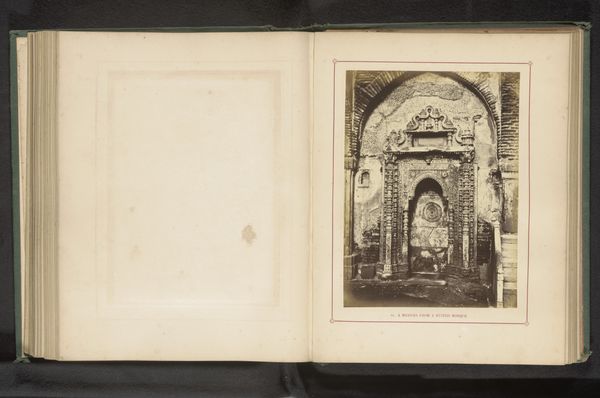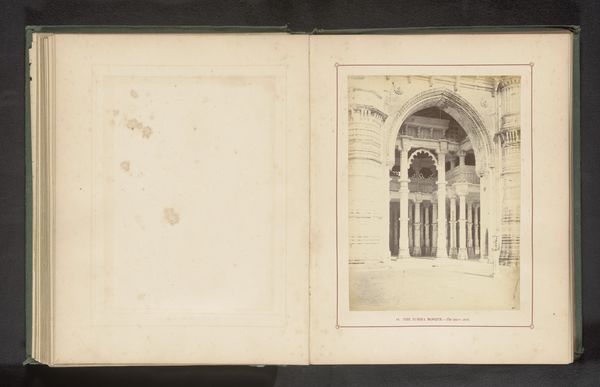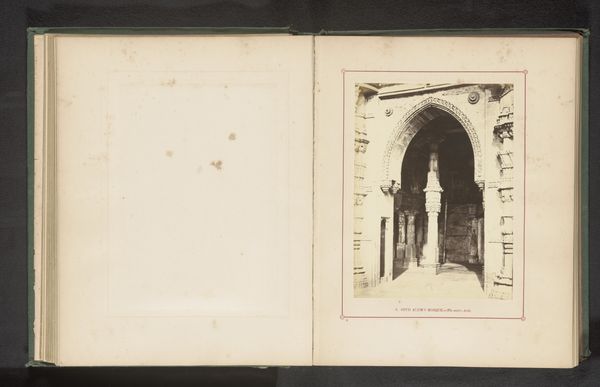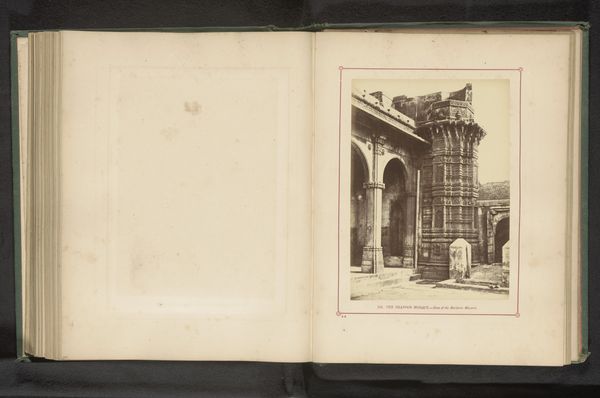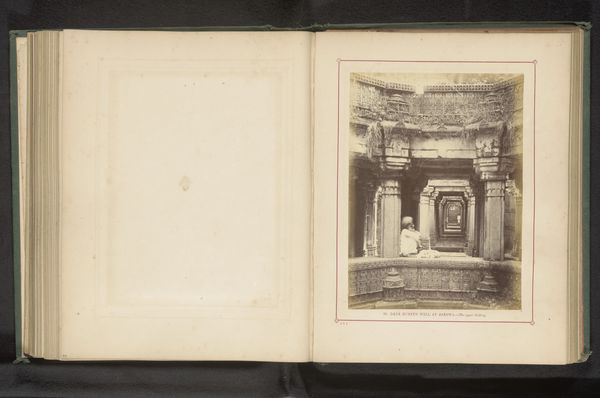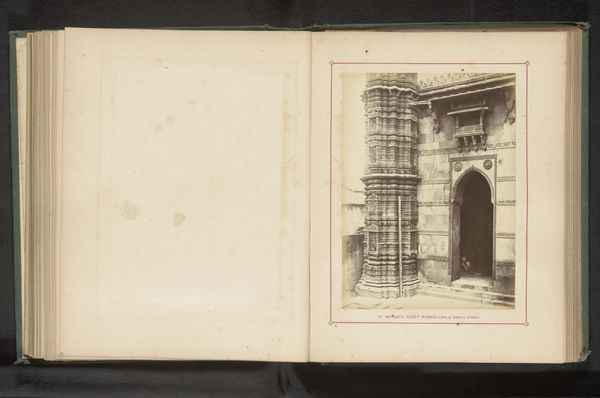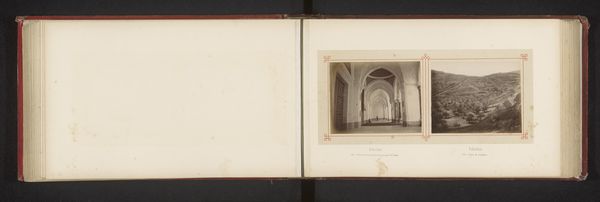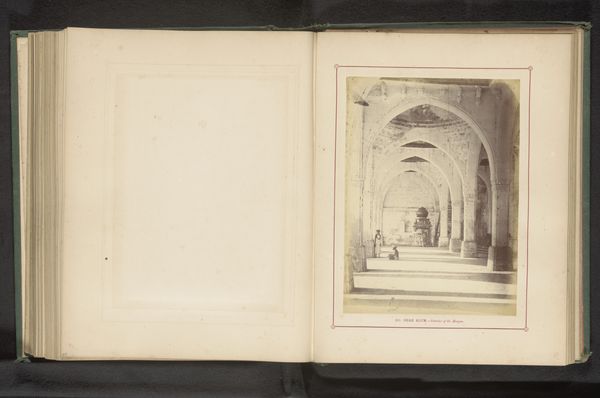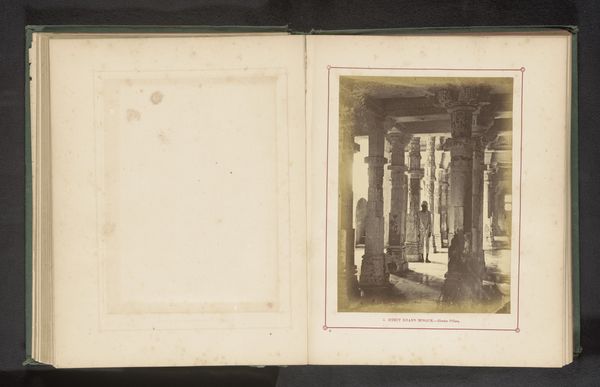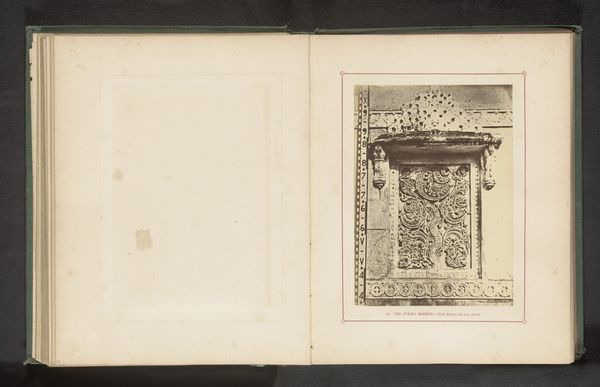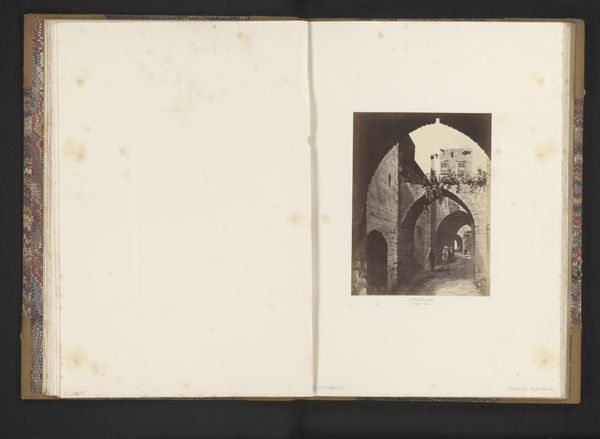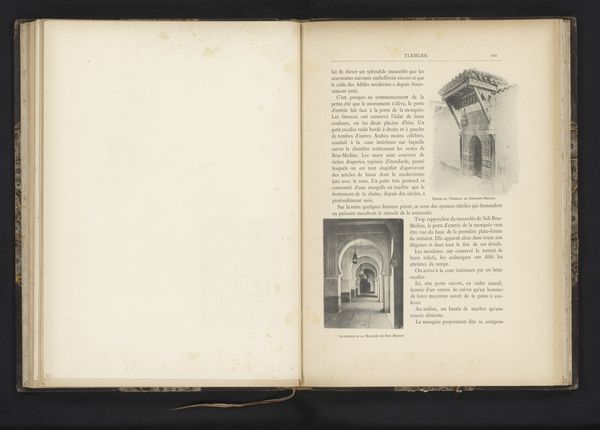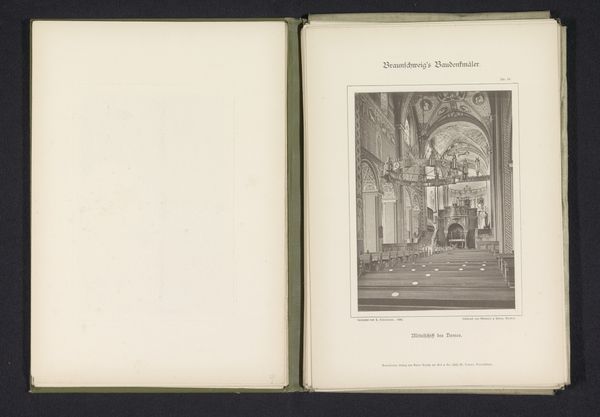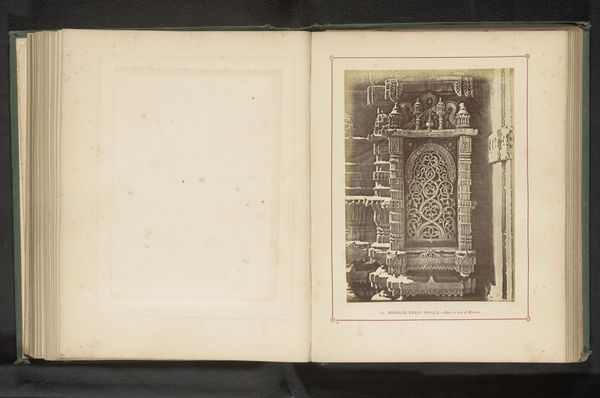
photography, gelatin-silver-print, architecture
#
landscape
#
photography
#
ancient-mediterranean
#
gelatin-silver-print
#
islamic-art
#
architecture
Dimensions: height 199 mm, width 145 mm
Copyright: Rijks Museum: Open Domain
Thomas Biggs captured this image of a mihrab in the Jama Masjid in Ahmedabad in a photograph. The mihrab, or prayer niche, is a visual code denoting the direction of Mecca, and thus, it orients the faithful during prayer. The image itself is an artifact of British colonialism in India. The mosque, built in the 15th century, became a subject of British interest in the 19th century. Biggs worked for the British government, documenting the architecture of the region. His photographs were used to create visual archives of the colonized territory. The British interest in cataloging Indian architecture was part of a broader project to understand and control the social and cultural landscape of the colony. Biggs’ photograph, therefore, reflects the social conditions of its time. It serves as a tool of colonial administration. To understand this image better, we need to know about the history of photography in India, the role of the British government in documenting Indian architecture, and the social and political context of British colonialism. The meaning of this image is contingent on its social and institutional context.
Comments
No comments
Be the first to comment and join the conversation on the ultimate creative platform.
